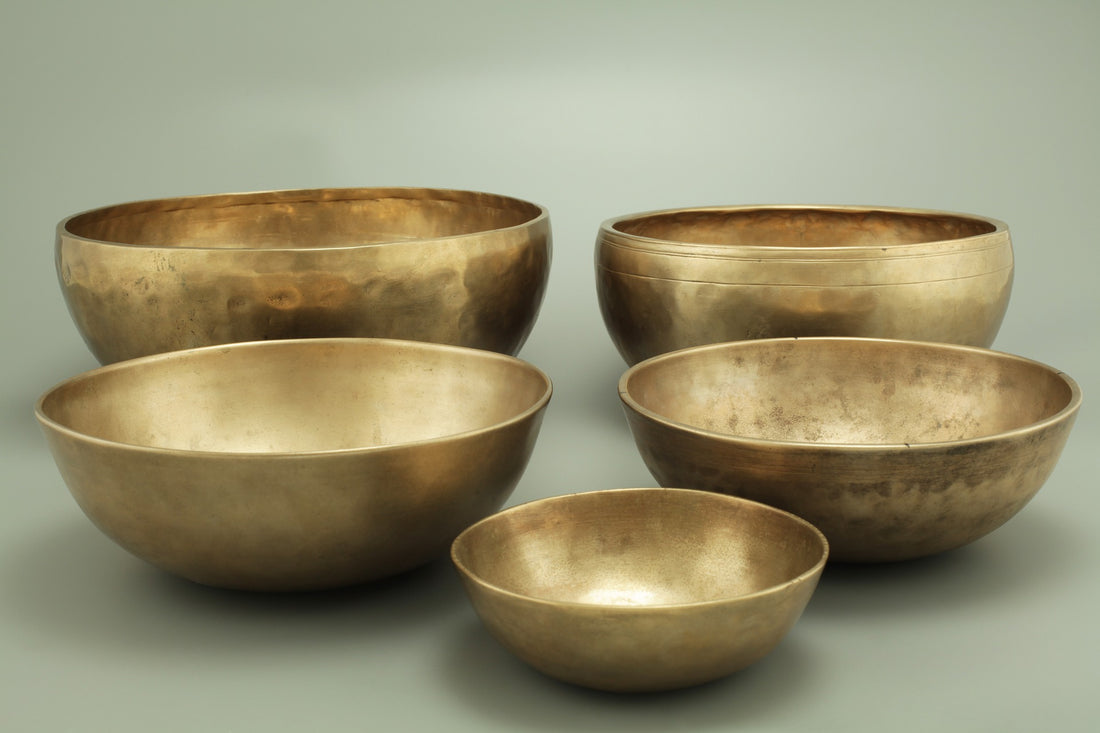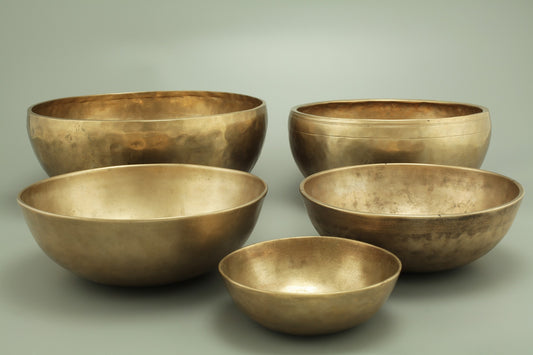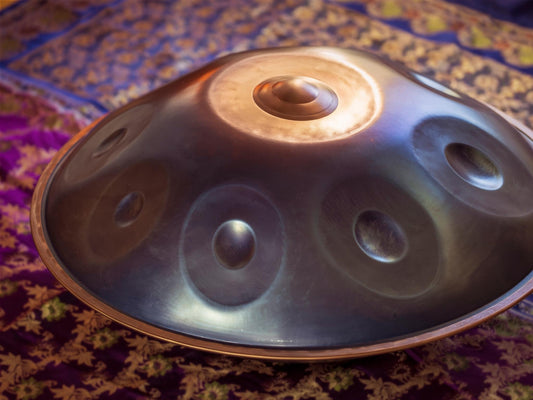A Tibetan singing bowl is a type of bell used in meditation, healing, and other spiritual practices. It is made from several metals, including gold, silver, brass or bronze. These are usually melted together to create the bowl itself.
The metal that forms the outside of the bowl has symbols written on it in Tibetan script. This symbolized an ancient tradition of wisdom. The bowl is then polished and has a smooth surface, making it easier to move when struck.
The Tibetan singing bowl was created in the Himalayan region of Tibet. The first known type of bell was created in 200 BCE with metal discs representing the full moon. These were placed on a wooden stick and would be struck with another stick to produce sounds.
The Tibetans developed their own type of bell called a handbell or "dril bu". This is similar to the ancient types of bells, but it was hung from a wooden handle and was struck on its side to produce sounds.
The use of singing bowls originates from Tibet, China, Nepal and India.
When Was The Tibetan Singing Bowl Invented?
The first mention of the existence of a singing bowl dates back to the 12th century when it was mentioned in a book called 'Prayer Flags'. It's believed that the first singing bowl was invented in Nepal around 1000 AD.
A Buddhist Monk called Byang chub sems dpa' created the first Tibetan singing bowls by accident after spending many years trying to make gold. The monk thought he had failed at his task but later realized that the mixture of metals he used actually produced a sound that was similar to that of a singing bowl.
The actual process of creating the bowls started in Nepal and India then spread throughout China. It arrived in Tibet around 618-906 AD, long after it had been introduced to other countries around Asia.
Who Created The Tibetan Singing Bowl?
Nobody really knows for sure who invented the bowl, but in Tibetan Buddhism, it is believed that ancient knowledge has been passed down throughout the years. It's believed to be secret wisdom that was written on metallic plates and hidden underground.
It wasn't until around 618-906 AD that singers bowls made their appearance in Tibet. At this time, Tibet started its period of self-isolation from the rest of the world. It was during this time that a Buddhist Monk called Byang chub sems dpa' found the first singing bowl in a cave somewhere on Mount Yung-drung Gu-tzeg.
He discovered it by accident whilst looking for metallic plates with secret wisdom written on them. The bowl is made from gold, silver, brass or bronze. These are melted together to create the bowl itself. The metal that forms the outside of the bowl has symbols written on it in Tibetan script, which were used to represent ancient traditions of wisdom.
The actual process of creating the bowls started in Nepal and India then spread throughout China. It arrived in Tibet around 618-906 AD, long after it had been introduced to other countries around Asia.
Where Did The Tibetan Singing Bowl Originate?
The actual process of creating the bowls started in Nepal and India then spread throughout China. It arrived in Tibet around 618-906 AD, long after it had been introduced to other countries around Asia.
How Tibetan Singing Bowl Works
Tibetan singing bowls are said to work using the vibrations of sound. This is believed to change the vibrations in our life too. Tibetan singing bowls produce seven different pitches that act like symbols within meditation practices. The various sounds help us get into harmony with ourselves and bring us closer to achieving spiritual goals or becoming closer to the divine.
The different types of Tibetan singing bowls
There are many different types of Tibetan singing bowls, each one containing its own unique vibration, which is created by the material they are made from and how this is originally hit with a mallet. The Tibetan bowls come in various sizes, some as small as a thimble and some as big as a dinner plate.
There are seven unique sounds that each bowl is able to produce depending on the original material used to create it. This sound is said to have healing powers, both mental and physical too. The different sounds can be used for meditation or spiritual growth.
What Is Tibetan Singing Bowl Music Used For?
Tibetan singing bowl music is mainly used for meditation and spiritual growth. It allows people to achieve a deep state of relaxation within themselves that can be reached with little effort. Tibetan Singing bowls are also able to cure negative emotions such as anger, fear or hatred.
If your looking for Tibetan Singing Bowl Music, Check out our Tibetan Singing Bowl Music, Vol. 1 below:
Why Are Tibetan Singing Bowls Healing?
The vibrations emitted through the singing bowls help us to focus on our emotions and overcome negative feelings, replacing them with positive ones. The actual sound of the Tibetan singing bowl releases tension within our minds, allowing us to find that inner peace that is so hard to reach. This allows people to heal themselves through meditation, both body and soul.
What Is Written On Tibetan Singing Bowls?
The symbols written on the outside of the bowl are used as a means for people to communicate with different Buddhas and deities that can guide us through our spiritual journey. There are said to be 108 different symbols written on singing bowls from Tibet, each one representing a unique task or ability. Some of these symbols are so old that their original meaning has been lost over time; however, many of them remain.
How Does Tibetan Singing Bowl Heal?
Tibetan singing bowls restore balance in our lives by helping us to relax and re-centre ourselves when problems start to surface. This helps people who are experiencing mental or physical illnesses find the strength they need to get through their everyday lives.
In Closing
Overall, Tibetan Singing Bowls are an interesting part of the culture that has spread across the world. They provide meditative benefits that impact our physical and mental health in a way that is hard to explain but easy to feel. People who experience this for themselves often want to learn more about where these bowls come from, what they are used for and how to get their own set.





